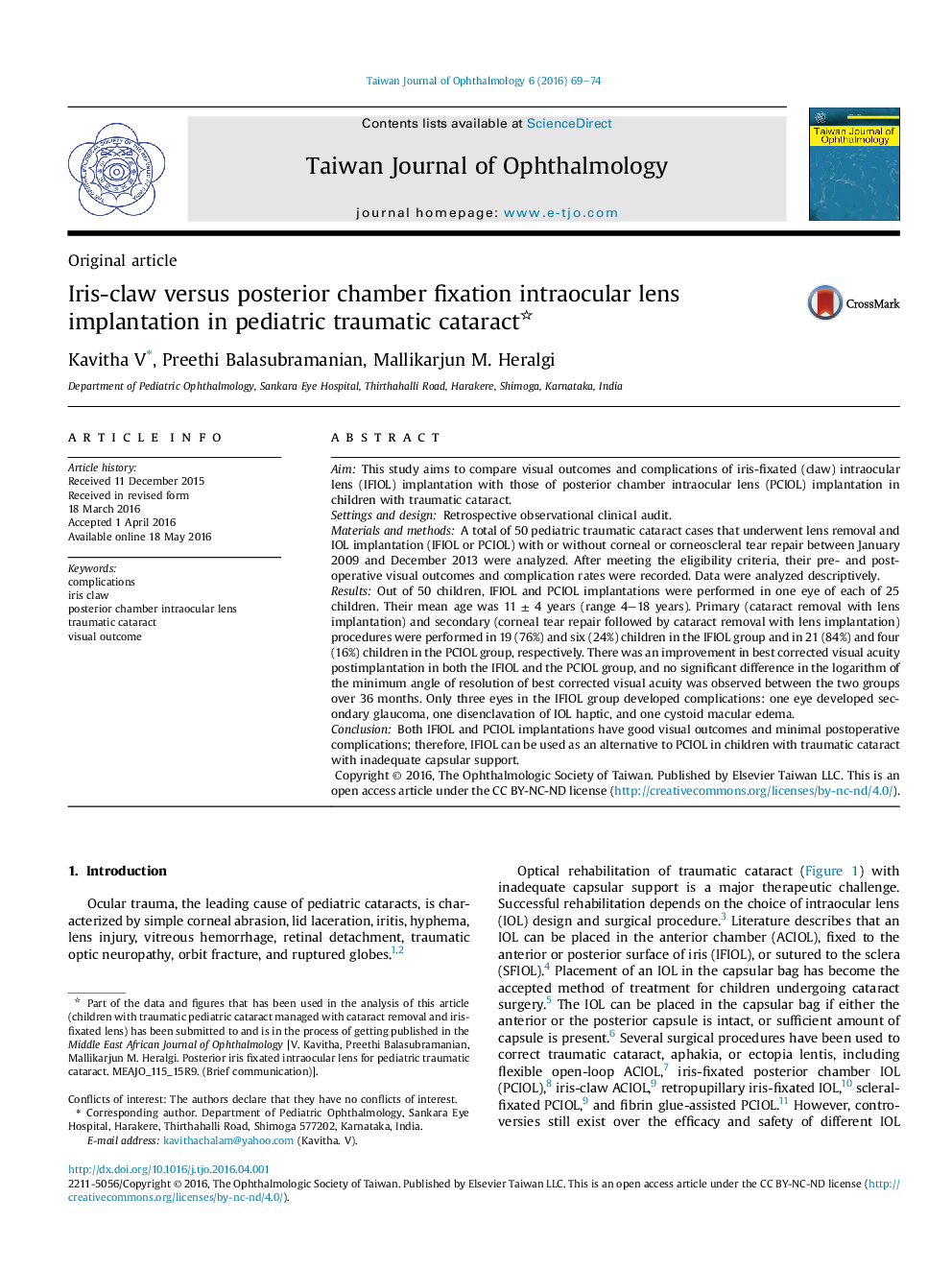| Article ID | Journal | Published Year | Pages | File Type |
|---|---|---|---|---|
| 4033307 | Taiwan Journal of Ophthalmology | 2016 | 6 Pages |
AimThis study aims to compare visual outcomes and complications of iris-fixated (claw) intraocular lens (IFIOL) implantation with those of posterior chamber intraocular lens (PCIOL) implantation in children with traumatic cataract.Settings and designRetrospective observational clinical audit.Materials and methodsA total of 50 pediatric traumatic cataract cases that underwent lens removal and IOL implantation (IFIOL or PCIOL) with or without corneal or corneoscleral tear repair between January 2009 and December 2013 were analyzed. After meeting the eligibility criteria, their pre- and postoperative visual outcomes and complication rates were recorded. Data were analyzed descriptively.ResultsOut of 50 children, IFIOL and PCIOL implantations were performed in one eye of each of 25 children. Their mean age was 11 ± 4 years (range 4–18 years). Primary (cataract removal with lens implantation) and secondary (corneal tear repair followed by cataract removal with lens implantation) procedures were performed in 19 (76%) and six (24%) children in the IFIOL group and in 21 (84%) and four (16%) children in the PCIOL group, respectively. There was an improvement in best corrected visual acuity postimplantation in both the IFIOL and the PCIOL group, and no significant difference in the logarithm of the minimum angle of resolution of best corrected visual acuity was observed between the two groups over 36 months. Only three eyes in the IFIOL group developed complications: one eye developed secondary glaucoma, one disenclavation of IOL haptic, and one cystoid macular edema.ConclusionBoth IFIOL and PCIOL implantations have good visual outcomes and minimal postoperative complications; therefore, IFIOL can be used as an alternative to PCIOL in children with traumatic cataract with inadequate capsular support.
